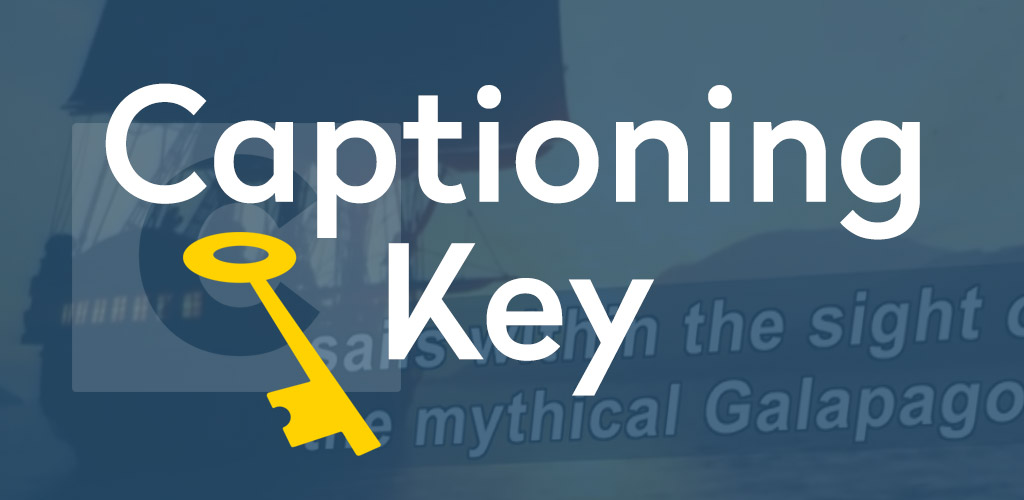Captioning Key - About the Key
About the Captioning Key
The first captioning of films in America occurred in 1951, three decades before the advent of closed captioning on broadcast television. It was performed by Captioned Films for the Deaf (CFD), the ancestor of DCMP, which became federally funded in 1958. Guidelines were developed at CFD to assist teams of teachers and deaf persons who wrote captions for many years, first for films and then later for videos.
The CFD guidelines were the cornerstone reference for the first edition of the Captioning Key published by the DCMP in 1994. This new manual of captioning guidelines incorporated results of published captioning research and examination of procedures utilized by various captioning vendors in the U.S.
The Captioning Key guidelines have been a reference for captioning of both entertainment and educational media targeted to consumers at all levels (children through adults). The manual has received international distribution and has been translated into other languages.
In the 20 years since the initial publication of the Captioning Key, worldwide use of captioning has expanded, with many different types of media being captioned at the time they are produced and distributed. DCMP has continually monitored consumer feedback, captioning research, studies, and reports such as the February 2014 Federal Communications Commission's "Closed Captioning Quality Report and Order, Declaratory Ruling, FNPRM." Results have been incorporated into revisions to the Captioning Key. DCMP staff, along with numerous advisors, board members, teachers, parents, and vendors have all contributed to subsequent revisions.
These guidelines are a key for vendors performing captioning for the DCMP. But the information is applicable to all others that provide captioning of all types of media at various levels. Thus, these guidelines will also be useful to media producers/distributors and others who are considering captioning their products or learning about captioning.
It should be noted that the best practices detailed in this guide are not always possible to follow due to technical limitations. Depending on the software utilized and the distribution medium, features such as positioning, italics, and font choice may not be available.
About the Described and Captioned Media Program
The Described and Captioned Media Program (DCMP) provides services designed to support and improve the academic achievement of students who are blind, visually impaired, deaf, hard of hearing, or deaf-blind. These services include (1) a library of free-loan described and captioned educational media (available to teachers, family members, and others involved with educating qualifying K-12 students), (2) a learning center with information related to educational media access, (3) a gateway to Internet resources related to accessibility, and (4) training and guidelines for service providers and others performing captioning and description.
Tags:

